By Carlos Saba and originally posted on medium.com
And an accidental journey from anonymous company to global movement
Whether you’re building a company, a charity, a local community group or global movement you’ll know the challenges of bringing people together to work on a shared vision.
This word community gets banded around more and more. But in truth, never have communities been more important than at present.
The cracks in society are everywhere. Could a loss of community be at the heart of it?
Our traditional communities are dying. Millenials are moving away from organised religion in their droves — churches being one of the casualties of the digital age. In the UK pubs, traditionally the lifeblood of villages and towns, are closing at an exponential rate.
Despite all this though, a wave of new kids on the block are emerging to take their place — to fill the need for belonging that all us humans crave. We’re just one of these new community builders looking to bring some long-lost human connection back to this hyper-connected world.
In this post I’d like to share with you what we’ve learned over the last 5 years building the Happy Startup community, in the hope that it will help you in your attempts to build yours.
First though let’s rewind to 2004

Enough, Britney, enough.
Back in those toxic days I started a fairly unremarkable digital agency with an old friend Laurence. As is typically the case for makers we built our business from our respective bedrooms using skills we’d taught ourselves.
The business grew comfortably but slowly.
Back then the way to grow a service business was to grow the head count. We’d watch in awe as other agencies were buying up property, aquiring companies and getting to work on sexy projects with the likes of Google.
But we’d ask ourselves, is that what we really wanted to do?
Speaking to these agency founders it became clear that growth often came at a cost.
- Firstly, it’s easy to stop doing the work you enjoy doing. You become a business owner and more often than not end up working on the business not in it.
- Secondly, growing an agency means growing the wage bill. The focus of each month soon becomes invoicing enough to feed the beast.

Some founders handled this really well, while many others found it a struggle.
We fell into the latter category — this type of future didn’t really get us excited.
In the end we had to work out the purpose of growing our company other than to bring in more revenue. Did the world need another cooking or dating app? Apparently not.
“The world doesn’t need another design agency (even if you’re a very good one), but it definitely needs a crack team of superheroes fighting for better business.” James, Cook Foods
We needed to take a long hard look at ourselves and what we wanted from the business. So we listed out all the things we currently enjoyed. Amazingly, none of it was to do with building websites — all of it was to do with how it felt.
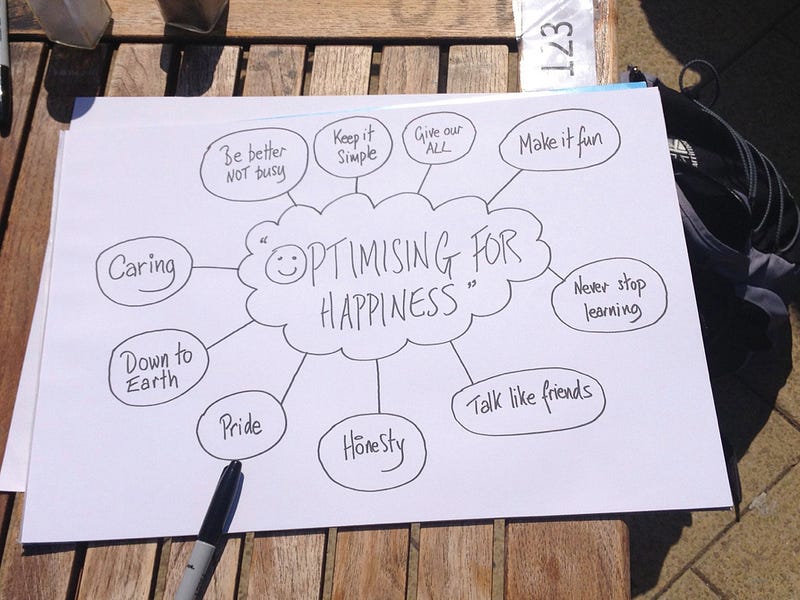
This was liberating.
It meant we could put our hand to anything if it aligned with our values.
We were now in the business of happiness — we just happened to be making websites.
The only downside was it was the time of The Apprentice and Dragons Den (Shark Tank in the US). Essentially, business — according to the media at least — looked a lot like this…

Whereas we wanted to question why business can’t look like this

“What if the purpose of business was to make the world a happier place? That is, what if the business of business wasn’t business?”
This is how we fell into the idea of The Happy Startup School.
“Forget B2B or B2C — it’s time for H2H (human to human)”
Community building — by accident
After that introspective work on our values, the next thing to do was to share it with others.
The Happy Startup School was just an idea at this stage and we had zero idea where this would lead us. But what we did know was what we stood for — and hoped that some others would feel the same.
And so we published our Happifesto.
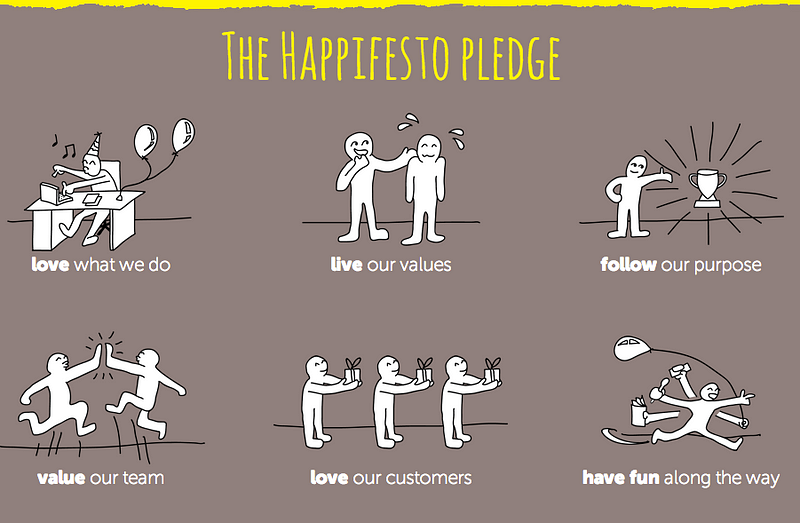
The response was overwhelming.
The word spread and within hours hundreds of people had signed up to it.
We no longer felt alone. There were other people out there who loved business but loved people too. People who believed, like us, that business could be a force for good.
In the 5 years since this germ of an idea has become a truly global community with some fancy numbers to back it up

So back to those 7 seeds
There’s definitely nothing special about us (just ask our wives). We’re just a couple of guys who felt the need to look at things differently and curious to see what emerged.
It really isn’t complicated.
But that doesn’t mean it’s easy.
Our journey was purely intuitive, but looking back we can identify some factors that contributed to the growth of our tribe. Factors that we believe are fundamental to building community.
1. FOCUS ON YOUR WHY
“People don’t buy what you do; they buy why you do it. And what you do simply proves what you believe.” Simon Sinek

Tell the world — why does your community exist?
We wanted to create a world where happiness was the measure of success. Clearly articulating our values made it easier to decide what was in and what was out.
For instance one of our values was make it fun. This made releasing our Happifesto a natural first step. It was a playful way of sharing our vision.
Another benefit of being clear about what you stand for is it becomes a beacon for others — and attracts collaborators and kindred spirits the world over.
Finally, when you focus on your why you’re less attached to what you do. You create the freedom to learn, grow and explore possibilities with your community.
2. DEFINE SUCCESS
If you don’t know where you are going, you’ll end up someplace else.

There are two levels of success — there’s what success means for the member and what it means for the community as a whole.
At the member level our definition of success has changed over time.
We started to learn more about the real value of the community which evolved our thinking. In the early days we talked a lot about company culture and why you should make happiness your business model. This message has evolved to become more about creating authentic businesses and doing work that aligns with who you truly are.
At the broader level our definition of success has always been the same. It‘s about creating a positive view of how the world can be if we put happiness at the heart of our decision making. This ethos has created a diverse tribe that is attracted to this idea and is willing to connect deeply with others to help make it happen.
The main thing about defining success is being confident that it aligns with your why, and gives you focus when going through the tough days ahead.
3. BE AUTHENTIC
Your vibe attracts your tribe

Defining what you’re striving for is all wasted effort if you don’t walk the talk.
“Your values are not trophies to be put on display. You need to live them, not laminate them.”
At one of our recent events someone asked how they can monetise their community without doing any hard work. The short answer is you can’t.
If the main driver for you to build a community is to make money out your members then it won’t last. People will smell it.
Our community was born out of our need to be surrounded with like-minded entrepreneurs. We felt isolated and out of place in the traditional world of business and needed to find our own tribe.
There was no monetisation strategy or business plan. We just went about creating the gatherings we wished had existed when we’d started our company.
When you work authentically and are being true to yourself, everything comes naturally — and things start to happen. For example, after a few months of launching The Happy Startup School we’d already created more awareness and feeling of impact than in 10 years of running our agency.
4. FOSTER DEEP CONNECTIONS
“Stop doing business and start being human.” Kees Klomp
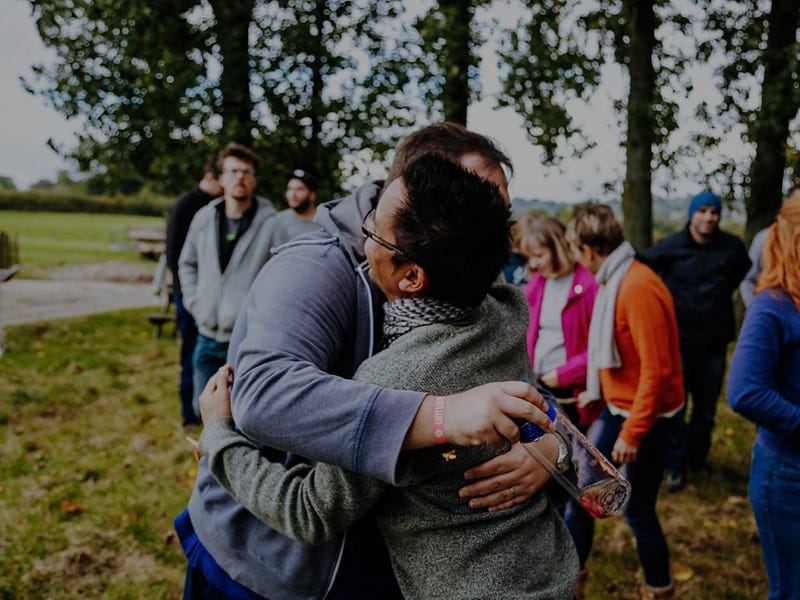
We live in a world that is obsessed with scale and growth. A recent article in Wired magazine talks about the recent WeWork takeover of Meetup.
“We want to transform Meetup’s 35 million-member platform into a new type of billion-member social service.”
I believe this is creating a damaging message for budding community builders.
Facebook isn’t one big community. It’s a lot of smaller communities using a technical tool to broadcast to each other. You can’t just scale a community like you scale the growth of an app.
Experience tells us that community takes time and can’t just be built online. When interacting in the real world you have no choice but to be fully present. Paying attention means actively listening — not just waiting for your turn to speak.
We need more spaces where we can share our personal stories, be heard and have the conversations that matter. Places to be vulnerable and let our guard down. Not the rose-tinted view you might see on social media.
It’s taken us 5 years to get where we are now, and we’ve built our community one person at a time. Yes we’ve still got a long road ahead. But thanks to the deep friendships we’ve made so far, the future looks bright. We’re on solid ground.
We’re building trust and connection between people, and if projects and businesses spin out from that then that’s an added bonus.
5. CREATE SHARED EXPERIENCES
Change happens on the inside, outside
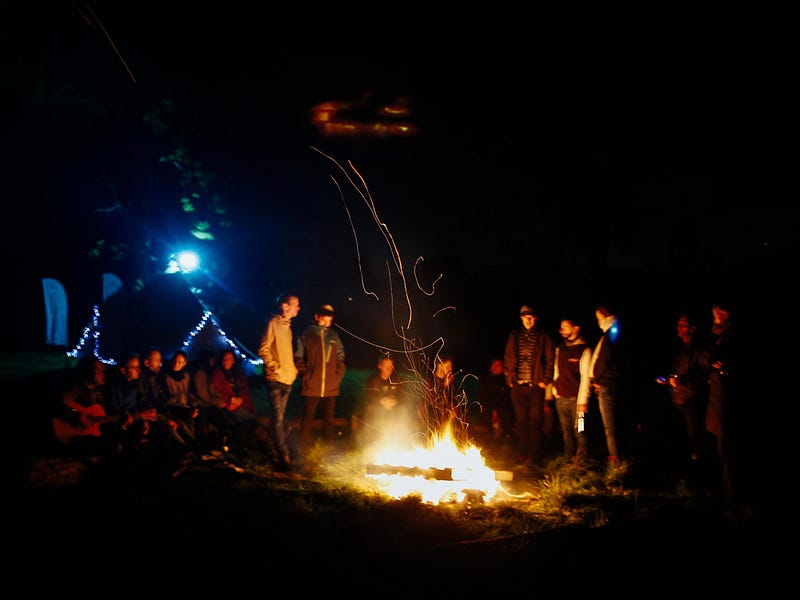
There is nothing quite like a conversation around a campfire in the still of night, or the buzz and laughter around a shared meal.
We’ve found that deep connections can be formed quickly when sharing meaningful experiences.
A shared experience helps build a shared reality. We’ve found this happen time and again at our Summercamp. It has been overwhelming each year to witness 150 people arrive as strangers, and leave as friends 2 days later.
You don’t have to go anywhere exotic to create shared experiences. A simple meal together or a walk in nature creates the same effect. Taking these adventures together gives us the opportunity to share our stories with others, whilst also creating new ones.
6. SHARE YOUR STORY
The best stories are told by the best storytellers

Storytelling is your marketing tool and the glue that keeps your community together. A good story, well told, will spread on its own while still remaining true to its essence.
We believe shared stories, like shared experiences, create a deep sense of belonging.
Storytelling is also the most efficient way to communicate your why. This means how you tell your story is just as important as the content.
The success of our community is in no short measure down to how we’ve communicated our stories. Whether it’s writing a blog post, creating a slide deck or giving a talk, how you communicate your message is as important as what you say.
You don’t have to be a great storyteller or designer to share great stories. What you need is to do is create empathy. Sebastian Castro — an amazing storyteller and thought leader — shared with us at Summercamp what makes a good story.
One of the key elements is making stories personal. They need to be about you, your experience and your emotions throughout. These are the kinds of stories that connect with others.
7. LEAVE SPACE FOR EMERGENCE
“We cannot solve our problems with the same level of thinking that created them.” Albert Einstein

Finally, one of the most important aspects of our community is how we host.
When attending other conferences and gatherings we found the big breakthroughs and new connections happened during the in-between bits.
We’ve seen that for many community builders and event organisers, the need to manage the outcome and create structure can actually get in the way. This need for control can often restrict ideas and miss out on the wisdom of the group.
We’ve found by getting out of the way you can create much more value.
Our world is getting ever more complicated and the challenges we face are rarely solved by a lone genius. It will take collaboration and creativity to find the solutions we need. These can only emerge if we give them space.
“None of us is as smart as all of us.” Ken Blanchard
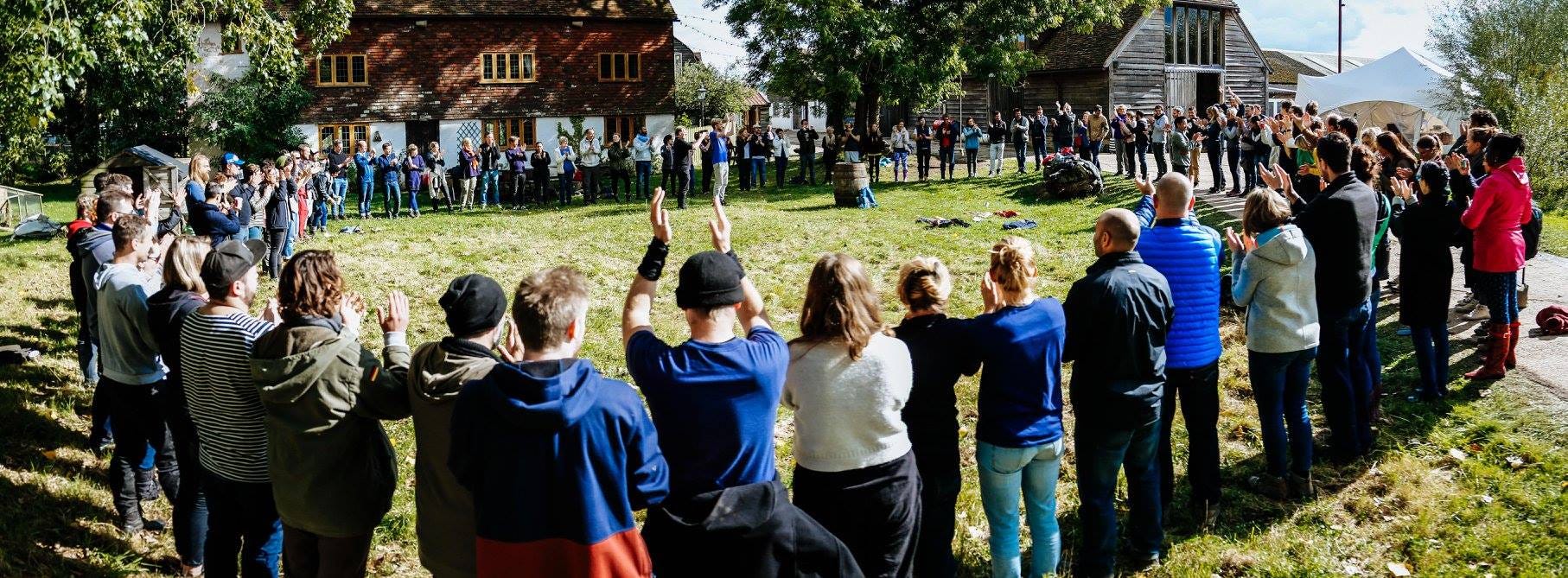
Making sense of it all
I once heard that building a community is like tending a garden.
You can control what’s in and what’s out but you can never predict how things will grow. Our job as community leaders is to curate the community and nurture the different voices within it.
We’re not looking to build an echo chamber but rather a space for healthy debate, compassionate support and constructive criticism. That’s how we’ll grow and collectively make impact.
This is what we’ve learned so far about building communities and we’re keen to connect with other community builders out there. We’re five years in but we’re just getting started. We’ve laid strong foundations and look forward to building upon this.
We’re still learning and so your thoughts and feedback would be much appreciated. How have you built your community?
Republished with permission of the author
Featured Image/graphic link added by Enlivening Edge Magazine.

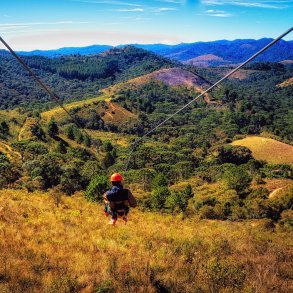



Great article. It be all about the energy!